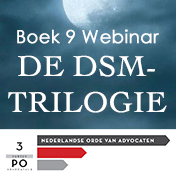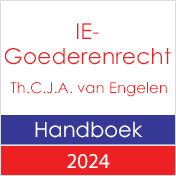 Gemeenschapsmerk - Vernietiging van beslissing van de vierde kamer van beroep van het BHIM houdende verwerping van het beroep tegen de weigering van de onderzoeker om het woordmerk "pianissimo" in te schrijven voor waren van klasse 7.
Gemeenschapsmerk - Vernietiging van beslissing van de vierde kamer van beroep van het BHIM houdende verwerping van het beroep tegen de weigering van de onderzoeker om het woordmerk "pianissimo" in te schrijven voor waren van klasse 7.
Het beroep wordt verworpen. Het aangevraagde woordmerk bestaande uit een reclameslogan “Pianissimo” mist elk onderscheidend vermogen. Het woordmerk zal door het relevante publiek als een louter verkoopbevorderende formulering worden ervaren die erop wijst dat de betrokken producten (o.a. motoren) stil functioneren. Het enkele feit dat dezelfde teken op het grondgebied van een andere lidstaat onderscheidend vermogen heeft, kan niet leiden tot een verplichting dit merk in te schrijven.
40 In this case, it is apparent from the contested decision that the Board of Appeal undertook a full and specific examination of the trade mark applied for before refusing to register it. In addition, it is apparent from the examination of the applicant’s other complaints that that examination led the Board of Appeal to find, correctly, that the absolute ground for refusal to register referred to in Article 7(1)(b) of Regulation No 207/2009 existed and thus precluded the registration of the trade mark applied for. Since the examination of the trade mark at issue in the light of that provision could not, in itself, lead to a different conclusion, the applicant’s claims of a failure to take into consideration the registration of identical marks cannot succeed. In order to cast doubt on the conclusion that the registration of the trade mark applied for is incompatible with Regulation No 207/2009, the applicant may thus not properly rely on a previous decision of OHIM.
43 It follows, moreover, from the unitary character of the Community trade mark that, in order to be accepted for registration, a sign must have distinctive character, inherent or acquired through use, throughout the European Union. It would be paradoxical to acknowledge, on the one hand, under Article 3(1)(b) of Directive 2008/95/EC of the European Parliament and of the Council of 22 October 2008 to approximate the laws of the Member States relating to trade marks (OJ 2008 L 299, p. 25), that a Member State is obliged to refuse to register as a national trade mark a sign devoid of distinctive character in its territory and, on the other hand, that that State is obliged to respect a Community trade mark relating to that same sign on the sole ground that it has distinctive character in the territory of another Member State (judgment of 14 December 2011 in Vuitton Malletier v OHIM — Friis Group International (Representation of a locking device), T 237/10, EU:T:2011:741, paragraph 100).
Lees het arrest hier.
IEPT20150121, GEU, Grundig Multimedia v BHIM I



























































